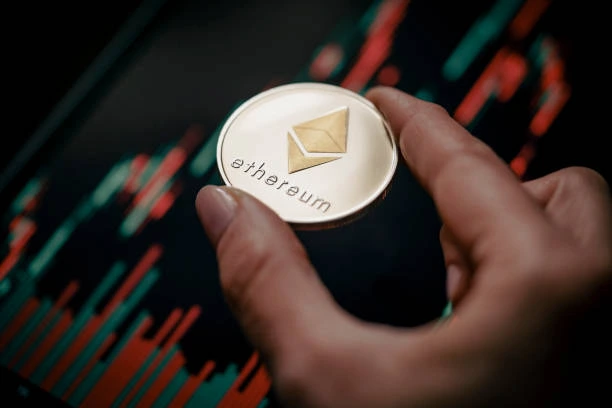Introduction

Table of Contents
Ethereum: The Smart Contract Revolution and Its Future because Ethereum is the second-largest cryptocurrency in terms of market capitalization and the top platform for smart contracts and decentralized applications (dApps). While Bitcoin exists primarily as digital gold, Ethereum broadens the use cases for blockchain by allowing developers to create financial services, NFTs, and other applications.
But what is special about Ethereum? How does it operate, and where is this potent blockchain going in the future? This article delves into Ethereum’s technology, investment prospects, and future innovations.
Ethereum the Smart Contract Revolution and Its Future
The History of Ethereum:
In 2013, Ethereum was conceptualized by blockchain aficionado and programmer Vitalik Buterin. Buterin recognized the limitations of Bitcoin and envisioned a more versatile blockchain.
Major milestones in Ethereum’s history:
- 2015: Ethereum was launched officially with its initial version.
- 2017: ICO (Initial Coin Offering) boom led to huge adoption.
- 2020: Ethereum 2.0 upgrade was announced, with a focus on scalability.
- 2022: Ethereum switched from Proof of Work (PoW) to Proof of Stake (PoS).
- Today, Ethereum is the foundation of the DeFi (Decentralized Finance) and NFT (Non-Fungible Token) space.
How Ethereum Works?
While Bitcoin is transaction-centric, Ethereum allows for smart contracts—self-executing programs that execute on the blockchain.
Ethereum’s main features:
- Smart contracts – They execute agreements without the need for intermediaries.
- Decentralized applications (dApps) – Ethereum-based apps operate without central authority.
- Ethereum Virtual Machine (EVM) – A computer engine that executes smart contracts.
- Ethereum’s blockchain has transitioned from Proof of Work (PoW) to Proof of Stake (PoS), which is more energy-efficient.

Ethereum vs. Bitcoin: Main Differences
- Feature Ethereum (ETH) Bitcoin (BTC)
- Main Use Smart contracts & dApps Store of value & digital currency
- Transaction Speed Faster (12-15 sec per block) Slower (10 min per block)
- Consensus Mechanism Proof of Stake (PoS) Proof of Work (PoW)
- Smart Contracts Yes No
- Scalability Solutions Ethereum 2.0, Layer 2 solutions Lightning Network
- Ethereum is more versatile than Bitcoin, thus is critical to the blockchain ecosystem.
Ethereum 2.0: The Big Upgrade:
Ethereum suffered scalability and high gas fee problems, prompting the Ethereum 2.0 upgrade, which is “The Merge.”
Advantages of Ethereum 2.0:
- Faster transactions – Reduces congestion and maximizes speed.
- Lower gas costs – Saves users and developers money.
- Energy efficiency – 99% less energy than Proof of Work (PoW).
- Ethereum 2.0 is likely to make Ethereum the dominant smart contract platform.
The Position of Ethereum in DeFi and NFTs:
Ethereum is the foundation of DeFi (Decentralized Finance), powering platforms such as:
- Uniswap – Token swapping decentralized exchange.
- Aave – Crypto borrowing and lending platform.
- MakerDAO – Lending system based on stablecoins.
Ethereum also controls the NFT space, with sites such as:
- OpenSea – The most popular NFT marketplace.
- Rarible – A decentralized NFT marketplace.
- Axie Infinity – A blockchain gaming network.
- DeFi and NFTs would not be in the state they are today without Ethereum.
Ethereum as an Investment:
Ethereum has always been the second most valuable cryptocurrency behind Bitcoin. Investors view ETH as:
A store of value – Similar to Bitcoin, Ethereum has long-term value potential.
A technology pioneer – Most blockchain technologies are developed atop Ethereum.
A leading participant in Web3 – Ethereum drives the decentralized internet applications of the future.

Ethereum’s Challenges:
Ethereum is still an undisputed leader despite its challenges, which are:
- High gas prices – Transactions can be costly during times of high demand.
- Competition – Competing blockchains such as Solana, Cardano, and Polkadot provide quicker speeds at lower prices.
- Scalability problems – Ethereum 2.0 will address this, but the complete upgrade is ongoing.
- Ethereum needs to keep adapting in order to remain competitive in the blockchain sector.
The Future of Ethereum:
Ethereum will spearhead the Web3 revolution, where applications on blockchain technology displace the traditional internet services.
Potential futures for Ethereum:
Greater adoption by businesses and governments.
Ethereum as the default for smart contracts and DeFi.
Integration into metaverse and gaming ventures.
Although there are competitors, Ethereum’s first-mover status and developer community make it the future’s most promising blockchain.
Conclusion & Final Thoughts
Ethereum is not merely a cryptocurrency—it’s a platform that supports decentralized applications, smart contracts, DeFi, and NFTs. Its Ethereum 2.0 upgrade promises to address scalability problems, making it faster and cheaper.
As blockchain technology evolves, Ethereum will probably be one of the leading players, shaping the way people engage in finance, gaming, and the digital economy.
FAQs
What distinguishes Ethereum from Bitcoin?
Ethereum is a platform for smart contracts, whereas Bitcoin is primarily a store of value.
What is Ethereum 2.0’s purpose?
To enhance scalability, lower transaction fees, and make Ethereum less energy-hungry.
Can I stake Ethereum?
Yes, Ethereum currently operates on a Proof of Stake system, through which users are rewarded for staking ETH.
What are some practical applications of Ethereum?
DeFi, NFTs, gaming, identity verification, and supply chain management.
Will Ethereum be the dominant smart contract blockchain?
Ethereum competes with rivals, but its robust developer ecosystem makes it a long-term leader.